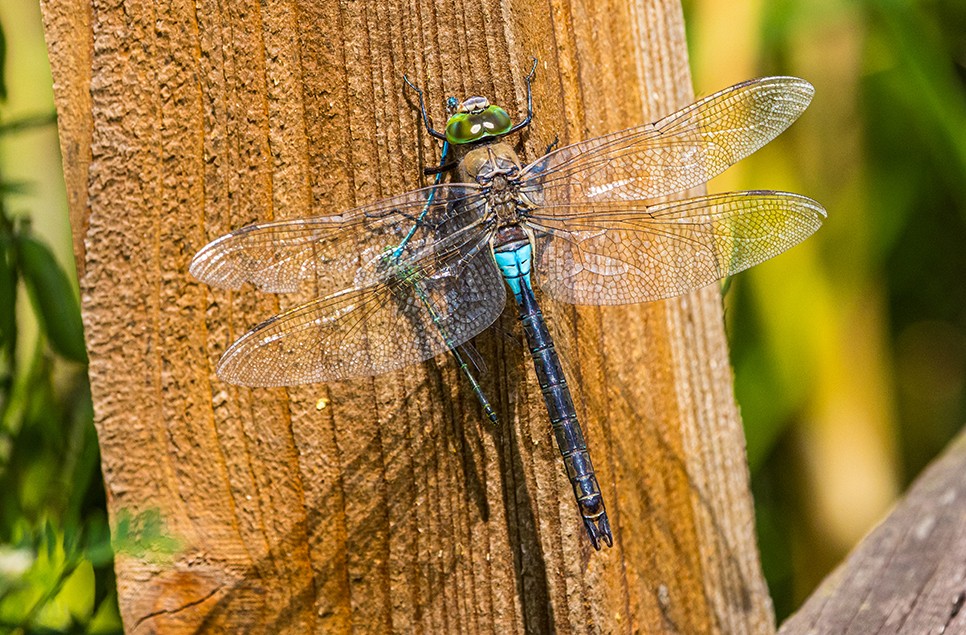Think pink! WWT's Paul Rose tells us why his job is flamin-good
Famous for their flamboyancy, few can argue that the flamingo isn’t one of the most fascinating animals on earth.
With their hot pink plumage, fabulous dancing skills, upside down beaks and one-legged stance, they make great birds to study. Our very own research associate Paul Rose has made a career out of it at Slimbridge in Gloucestershire, the only place in the world home to all six species of flamingo.
Paul joined WWT six years ago as a PHD student, studying the social behaviour of these birds which traditionally live in some of the planet’s most inhospitable places. His observations have helped provide a snapshot of their incredible lives in the wild. These studies are vital for conservationists trying to protect them from human encroachment and climate change.
Here, Paul shares some of his favourite flamingo facts and gives us an insight into what it’s like to work with these remarkable birds.
My favourite species are the Andean flamingos because they’re the most fabulous colour. They’re also the rarest species. We have the largest captive group in the world here. I like the story that they tell of the wetlands that they come from. They live in inhospitable wetlands in South America which is really harsh. Lots of other forms of wild life can’t survive there. All of the species are fascinating but they are particularly special.
Coming to Slimbridge is one of my earliest childhood memories. I’ve since completed a PHD on the birds that I saw as a child that are still here and alive. I love that. I don’t think that there are many people who have chosen to study a species that are long-lived enough to say they made a scientific career out of the actual birds they saw as a kid.
Most of my PHD was based on the social behaviours, so the interactions between individuals. I was investigating what structure there is in a group. How do flamingos get along with their friends? Because we don’t really know it in the literature. It’s very hard observing social behaviours in wild flamingos because their habitats are so remote.
They’re very discriminating in who they like and who they don’t like. When a flamingo puffs out its feathers it’s saying ‘get away, I don’t like you.’ When a flamingo likes another flamingo it will keep its feathers very flat and smooth.
The flamingos here have kept the same friends for the six years I’ve known them but who knows how long they keep friends?
While they all are bright coloured and use these choreographed dances, geography has made them distinct from each other.
I’ve become involved in a fair number of flamingo health checks which is quite good fun. I’ve become quite an expert at examining their feet. One of the problems that affects flamingos in captivity is that the skin on their feet can crack or get infected. I have endless photos of flamingo feet. If anyone finds my laptop they’re going to think I’m strange.
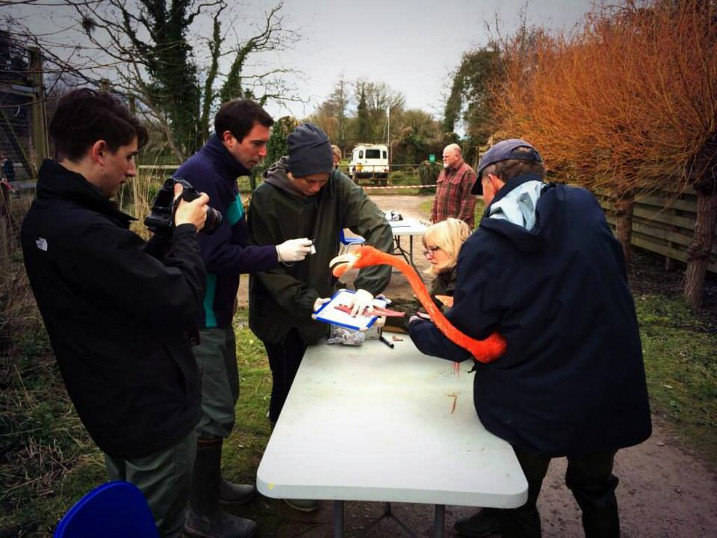 Flamingo health check
Flamingo health check
I really like it when I’m here last thing in the evening. Everything has gone quiet and most of the visitors have gone home. All the birds will be spread out over the enclosure. It’s very peaceful and calm. You can hear the birds talking to each other and it feels quite wild and natural. I really like that. Not many people see them at that time of the day.
I’ve taught animal behaviour since 2006 and I’ve always been interested in birds so you pick up nerdy facts. I just like knowing what animals are doing and for what reason.
I think I’ve learnt that, whilst I love animal behaviour, you have to have a real passion for staring at them and watching what they do. It’s all very good when we teach animal behaviour or show the exciting bits on a natural history programme. But sometimes you see all of them fast asleep on one leg and it’s my observation period and I’ve got to stand and stare at them doing a lovely impression of a lollipop. I think I’ve learnt that if you’re not patient you won’t get very good results.
I’ve seen them be fast asleep on one leg and then try to walk by lifting up the leg they’re standing on and just crashing into a heap. Fabulous.
I think the babies look really pretty when they’re starting to change colour and they have this patchwork effect.
When it’s breeding season the male will follow the female around and she’ll try to make a platform with her wings. They are incredibly bad at making babies. Sometimes they get the wrong end.
I never expected when I set out to be a PHD student that I’d get to film with David Attenborough. We spent the morning filming with Chilean flamingos and then a group of us had lunch together. It was just madness having David Attenborough eat lunch beside you in Sir Peter Scott’s old dining room, listening to him talk about his conservation work and how he started on TV. He said that the reason the BBC natural history building is in Bristol is so that it was near Slimbridge. I had to pinch myself.
People think flamingos are just pink and stand on one leg – but actually because they’re quite active and their behaviour changes often, they actually make very good research subjects. So from an educational point of view, I’ve always banged on about these birds being so important for science. They’re very good at training people at how to watch, measure and observe. You can get so close to them. They don’t care about the visitors, they behave as wild flamingos will do so from a science point of view they tick a lot of the boxes.
Flamingos are so brave. They’re aware that that’s their space and they can do what they want with it.
My all-time absolute favourite flamingo is Mr James - one of Slimbridge’s oldest flamingo. He is the best flamingo in the entire world and he needs to just go on forever because he’s wonderful. He looks stunning at the moment because he has moulted through to the most spectacular breeding colours. James and Andean flamingos are closely related. Andeans have the black triangle wedge on their tails and James’ have beautiful banana beaks.
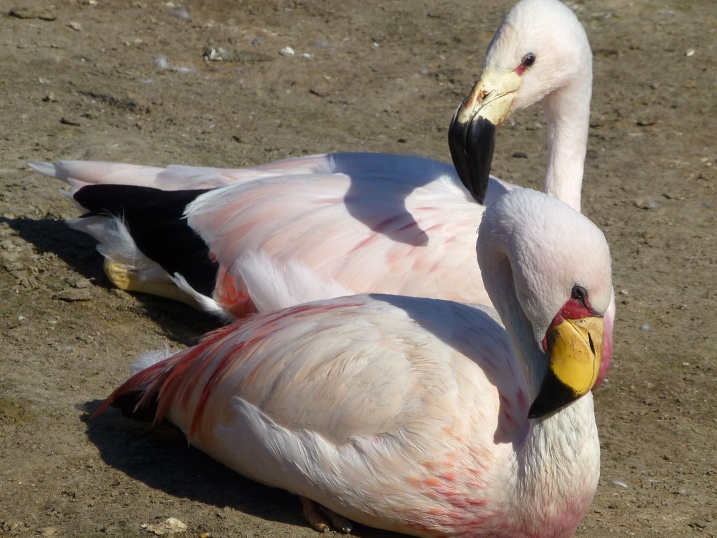 Mr James in front
Mr James in front
Mr James is in an enclosure with the Andeans and when they dance he’s aware that something is going on. They dance kind of differently so he’s like: ‘whey OK we’re going over here… Stop!’ in the wrong direction.
All species of flamingos do the march – some better than others. The lesser flamingo is the best, the Caribbean not so much. They will dance but it’s very chaotic, very noisy and very disorganised. The lesser flamingo – when you see them dance it looks like their legs are on a conveyor belt. Their dance is incredibly precise. They do a very tight march and they also do this broken neck display when they snap their head forward, so their head will come down their necks like a hair clip. So you’ve got these loud, shouty mess of a birds at one end of the scale and you can see how it’s evolved in the lesser flamingo. It’s much more choreographed.
The Chilean will live in the same environment as the Andean and James’ flamingo but they don’t compete because their beak structure is different so they feed on different foods. Again, the lesser and the greater flamingo live in the same soda lakes but they don’t compete because they eat different things.
Out of the six species four of them have an IUCN threat category. They are threatened by human encroachment. Several species have declining population trajectory.
Without these birds at Slimbridge we would know so much less about flamingos in the wild. The captive flamingo is important because it is a real snapshot of what happens in the wild. That’s one of the few captive species that we can say that about. It’s important for our understanding in the wild.
We need to get the message across that the birds we keep here as captive collections are not just here for show. I worry people think it’s a gimmick. They’re not. There is real research and education and conservation taking place. You can come here and have a lovely day out but don’t underestimate their usefulness as they tell us a lot about these species. If we didn’t have them, we would be a lot poorer in our understanding.
They are victims of their own success. They live for a very long time but if their productivity is poor, you’re not going to get enough baby flamingos to manage the flamingo into the future.
The lesser flamingo in Botswana will breed successfully on average once every seven years so that’s an incredibly long turn around. That’s a bird who in the wild has a lifespan of 52.
If things like climate change have the effect it’s projected to have on wild populations, I don’t think the flamingo will be able to evolve quickly enough to deal with it.
There is a wonderful word that we use for an animal that is extremely specialised – it’s called an extremophile because it has this very restricted niche that it lives within. We have these caustic lakes like Lake Natron where the lesser flamingo comes from in East Africa. The PH of the water is so alkaline it will strip human skin down to the bone but they can wade through it because their skin is thick. That’s millions of years of evolution and it’s not going to change overnight if we alter their habitat.
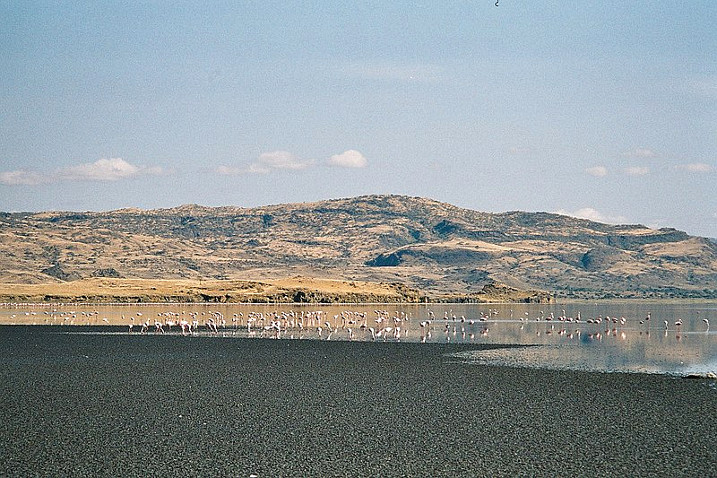 Lake Natron
Lake Natron
Because we have a lot of them people think they’re safe, but they are so long lived that what you’re seeing is the same animals again and again. You need to make sure they’re getting recruitment.
I’m incredibly grateful that we have these wonderful birds at Slimbridge. Without them they wouldn’t be accessible for me to go and study. Without funding, like the money that we receive from the players of People’s Postcode Lottery, we’re not going to have the birds and be able to give our visitors that sense of wonder that they get when they see a flamingo for the first time. We are only able to study them and help them because they are here. There would be no flamingo science if it wasn’t for flamingos to watch.
My favourite flamingo fact is their longevity. I knew they lived long but the oldest bird died when it was 83 in Adelaide. Our oldest birds date back to 1956 but they could even be older than that because when they arrived in 1961 they were already adults. There are several birds in our greater flamingo flock that are nearly in their seventies still breeding and still with their partners.
I have some fabulous photos of Andean flamingos coming down the Andean mountain on the backs of bicycles. They could even be pictures of our flamingos – who knows?
We’re still really unsure about their classification. We don’t know where they fit into the bird family tree. Some people think they’re ducks, some people think they’re pigeons. Right now they’re linked to grebes and the shorebird family but it’s still very, very contentious.
The greater flamingo has been shown to cosmetically alter its appearance – use bird make-up. They use preen oil to oil their feathers but actually they can make their head and neck feathers brighter with it by staining them with this oil. They spend a of time preening. If you’re strong and healthy you can spend more time putting colour into your feathers being brighter so you can get a boyfriend or girlfriend quicker. Both sexes preen.
Both females and males display together during the courtships. She will pick a mate and he will pick a mate. It’s very democratic. It’s incredibly subtle and delicate. You have this group but gradually pair bonds will drift off together. That bond will be maintained until the chick has fledged.
We don’t know if they mate for life. In one colony of greater flamingos, there was annual monogamy. In these groups we see a mixture of life-long associates and we see birds that change partners every year.
I love flamingos. They have a strange taxonomy, they live forever and they’re just mad.
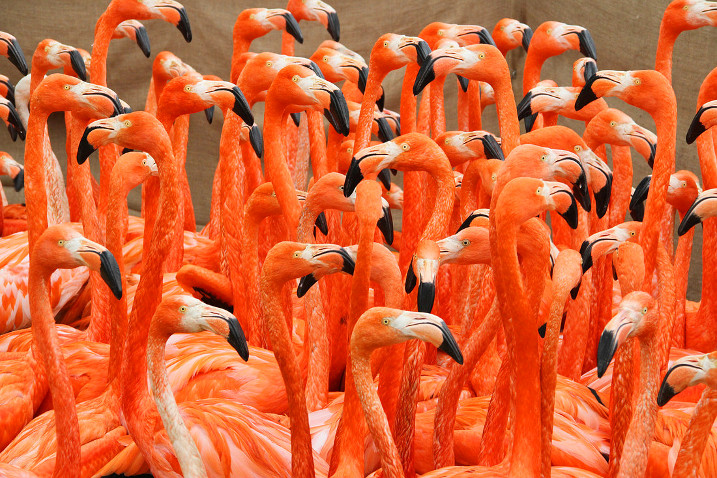 Caribbean flamingos
Caribbean flamingos



